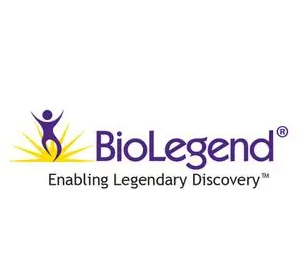上海细胞库
人源细胞系| 稳转细胞系| 基因敲除株| 基因点突变细胞株| 基因过表达细胞株| 重组细胞系| 猪的细胞系| 马细胞系| 兔的细胞系| 犬的细胞系| 山羊的细胞系| 鱼的细胞系| 猴的细胞系| 仓鼠的细胞系| 狗的细胞系| 牛的细胞| 大鼠细胞系| 小鼠细胞系| 其他细胞系|

| 规格 | 价格 | 库存 |
|---|---|---|
| 10µg | ¥ 5166 | 1 |
PG - Quality tested
Each lot of this antibody is quality control tested by immunofluorescent staining with flow cytometric analysis and the oligomer sequence is confirmed by sequencing. TotalSeq?-B antibodies are compatible with 10x Genomics Single Cell Gene Expression Solutions.
To maximize performance, it is strongly recommended that the reagent be titrated for each application, and that you centrifuge the antibody dilution before adding to the cells at 14,000xg at 2 - 8°C for 10 minutes. Carefully pipette out the liquid avoiding the bottom of the tube and add to the cell suspension. For Proteogenomics analysis, the suggested starting amount of this reagent for titration is ≤ 1.0 ?g per million cells in 100 ?L volume. Refer to the corresponding TotalSeq? protocol for specific staining instructions.
The RM134L antibody can block the costimulatory activity of OX40L. Additional reported applications (for the relevant formats) include: immunohistochemical staining of acetone-fixed frozen sections3, and in vivo and in vitro blocking of OX-40L-OX-40 functional interaction1,2,4. The LEAF? purified antibody (Endotoxin <0.1 EU/?g, Azide-Free, 0.2 ?m filtered) is recommended for functional assays (Cat. No. 108808).
TotalSeq? reagents are designed to profile protein levels at a single cell level following an optimized protocol similar to the CITE-seq workflow. A compatible single cell device (e.g. 10x Genomics Chromium System and Reagents) and sequencer (e.g. Illumina analyzers) are required. Please contact technical support for more information, or visit biolegend.com/totalseq.
The barcode flanking sequences are GTGACTGGAGTTCAGACGTGTGCTCTTCCGATCTNNNNNNNNNN (PCR handle), and NNNNNNNNNGCTTTAAGGCCGGTCCTAGC*A*A (capture sequence). N represents either randomly selected A, C, G, or T, and * indicates a phosphorothioated bond, to prevent nuclease degradation.
View more applications data for this product in our Scientific Poster Library.
Activated B cells, antigen presenting cells
1. Akiba H, et al. 1999. J. Immunol. 162:7058.
2. Stüber E, et al. 1995. Immunity 2:507.
3. Baum PR, et al. 1994. EMBO J. 13:3992.